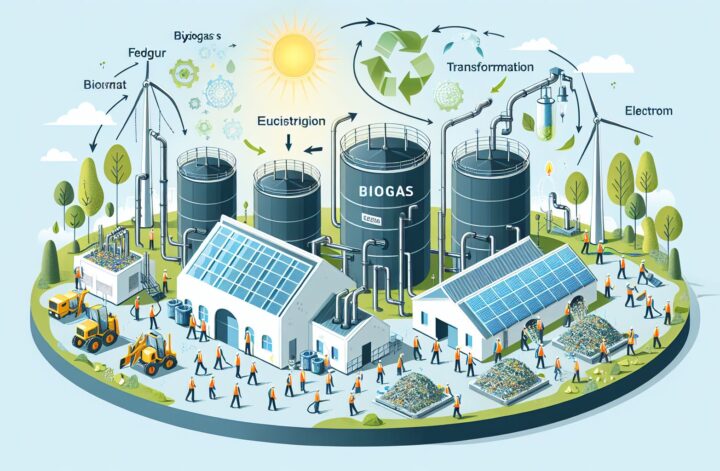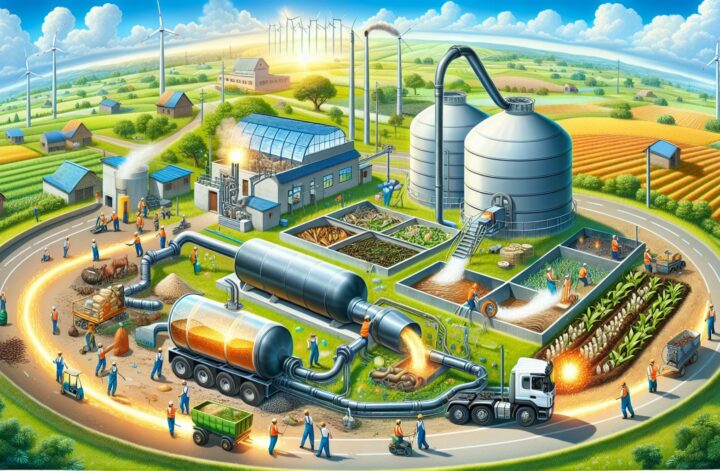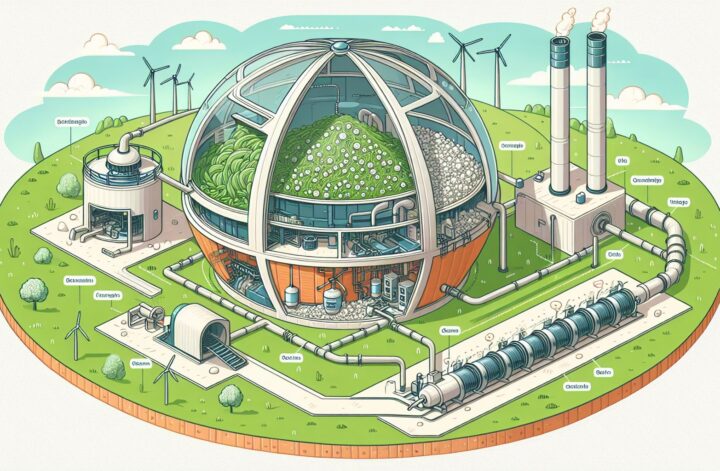The desire for sustainable and clean energy has prompted numerous researches in various scientific arenas. One of the chief areas of concern is renewable energy and biogas production has come out as a successful contender in this sphere. This article delves deeper into the process of biogas production, the role of waste treatment, and how it culminates into providing renewable energy.
What is Biogas?
Biogas is a type of biofuel that is naturally produced from the decomposition of organic waste. Party to the group of renewable energy resources, it is produced by the breakdown of organic matter in the absence of oxygen, through a process known as anaerobic digestion. The product of this process is a mixture of gases, primarily methane and carbon dioxide, and can be harvested to produce electricity, heat, and fuel. In addition to the biogas, the process also generates a nutrient-rich biofertilizer^(1).
Organic Waste Treatment for Biogas
The treatment of organic waste for biogas production involves several steps. It begins with waste collection. Various types of organic waste, including food waste, manure, sewage, and crop residues, are collected and transported to a central treatment facility. This waste is then processed – separated, shredded, and classified into different categories^(2).
The next process is anaerobic digestion. It takes place in large tanks called anaerobic digesters. During this complex biochemical process, microorganisms break down organic matter in a controlled, oxygen-free environment. This decomposition process leads to the production of biogas, which comprises mainly of methane, carbon dioxide, and trace levels of other gases. Digestate, a rich organic matter, is the by-product of this process and is used as a soil conditioner or fertilizer.
It’s important to mention that there are different technology options for biogas production, including high-rate anaerobic digestion systems and lagoon-based systems – each with its pros and cons. Therefore, the selection of the system arguably depends on the nature and volume of the waste as well as the investment capital available^(2).
Renewable Energy from Biogas
After extraction, biogas undergoes an upgrading process to increase its energy density and improve its quality to that of natural gas by removing undesirable components like hydrogen sulfide, moisture, and carbon dioxide. Following the biogas upgrading, what we have is biomethane – a high-energy gas that can be directly injected into the gas grid or used as vehicle fuel.
On the other hand, the raw biogas, without upgrading, can be used to produce electricity through a process called combined heat and power (CHP). This process involves the combustion of biogas to produce electricity and useful heat. Renewable energy derived from biogas thus provides a highly useful means of waste treatment, and, importantly, it helps in reducing greenhouse gas emissions that are damaging our planet^(3).
The Benefits of Biogas
Undoubtedly, biogas has a plethora of benefits, both ecologically and economically. As a renewable source of energy, it is sustainable. It helps in waste management by providing an eco-friendly way to dispose of organic waste. Besides, it also supports agricultural sectors by providing an organic fertilizer – the digestate.
Economically, biogas production fosters rural development by providing local energy production and creating job opportunities. The by-products of biogas, such as digestate and biosolids, are valuable organic fertilizers that enrich soil fertility and reduce the dependence on chemical fertilizers.
Indeed, biogas is a solution that addresses numerous challenges – from waste management and energy security to climate change mitigation. By optimizing the process of organic waste treatment for biogas production, we are harnessing the power of renewable energy and shaping a more sustainable future for us all.
Sources:
1. What is biogas? | energy.gov
2. Organic Waste for Sustainable Biogas Production
3. Reducing greenhouse gas emissions with biogas
DISCLAIMER: All ideas, recipes, & opinions are entirely my own gained from my experience in the renewable energy industry. This post may contain affiliate links, which means that I may receive a commission if you click a link and purchase something that I have recommended with no additional charge to you.




